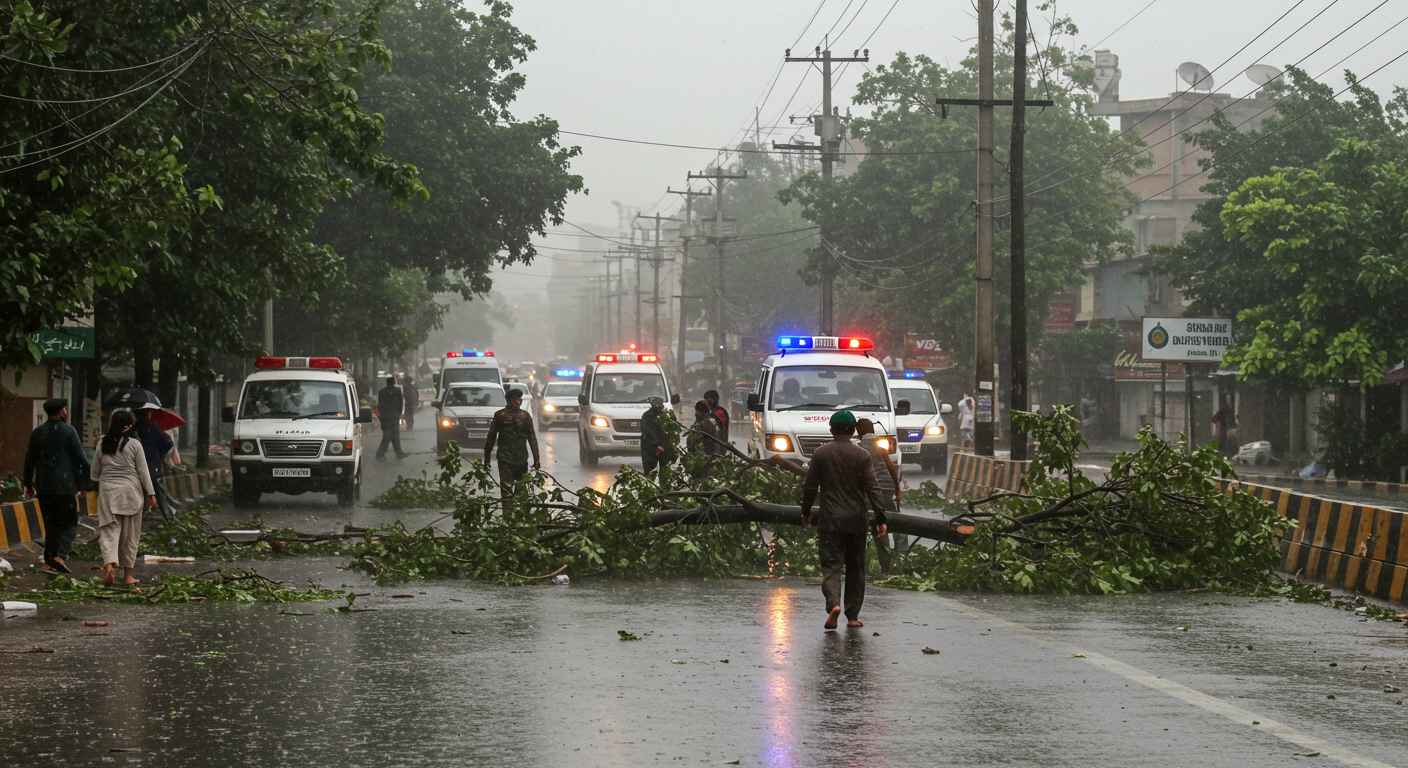Severe Monsoon Rains Disrupt Daily Life in Lahore
On July 8, Lahore and surrounding areas experienced heavy monsoon rains that began during the night, leading to widespread flooding and significant disruptions in daily life. Low-lying neighborhoods were particularly affected, with waterlogging making it difficult for vehicles to move and causing delays for commuters.
Several key areas of Lahore, including Shimla Pahari, Lakshmi Chowk, Jail Road, Gulberg, Airport, and Johar Town, saw intense rainfall. The streets in these locations quickly became submerged, creating hazardous conditions for both drivers and pedestrians. Many residents found themselves stranded or delayed as they attempted to navigate through the flooded roads.
Tolong support kita ya,
Cukup klik ini aja: https://indonesiacrowd.com/support-bonus/
The heavy rain also led to technical issues with the power supply. Dozens of feeders from the Lahore Electric Supply Company (LESCO) tripped, resulting in prolonged power outages across multiple areas. This added to the challenges faced by residents already dealing with the accumulation of rainwater in their homes and streets.
Motorists encountered significant difficulties while trying to drive through the flooded streets. In areas such as Allama Iqbal Town, Garhi Shahu, and Samanabad, traffic came to a near standstill as vehicles moved slowly through waterlogged roads. Pedestrians sought shelter from the relentless downpour, highlighting the severity of the weather conditions.
The Pakistan Meteorological Department has issued warnings of continued rainfall over the next two days across Punjab and other parts of the country. Authorities have advised citizens to remain cautious and avoid unnecessary travel during this period of adverse weather.
Emergency services and municipal teams have been deployed to clear drainage systems and restore power supply in affected areas. However, residents have expressed concerns about the slow response, especially in neighborhoods that are prone to flooding during the monsoon season. These areas often face repeated disruptions due to the heavy rains, which can lead to long-term damage and inconvenience for the local population.
In addition to the immediate effects of the rainfall, there are growing concerns about the long-term impact on infrastructure and public health. Flooding can lead to the spread of waterborne diseases, and the disruption of essential services such as electricity and transportation can have far-reaching consequences for the community.
Residents have called for more effective measures to mitigate the effects of monsoon rains, including improved drainage systems and better maintenance of power infrastructure. Local authorities are under pressure to address these issues to prevent future incidents and ensure the safety and well-being of the city’s population.
As the weather continues to be unpredictable, it is crucial for both the government and the public to work together in preparing for and responding to such natural disasters. Ensuring that emergency services are adequately equipped and that communication channels are open can make a significant difference in minimizing the impact of severe weather events.







